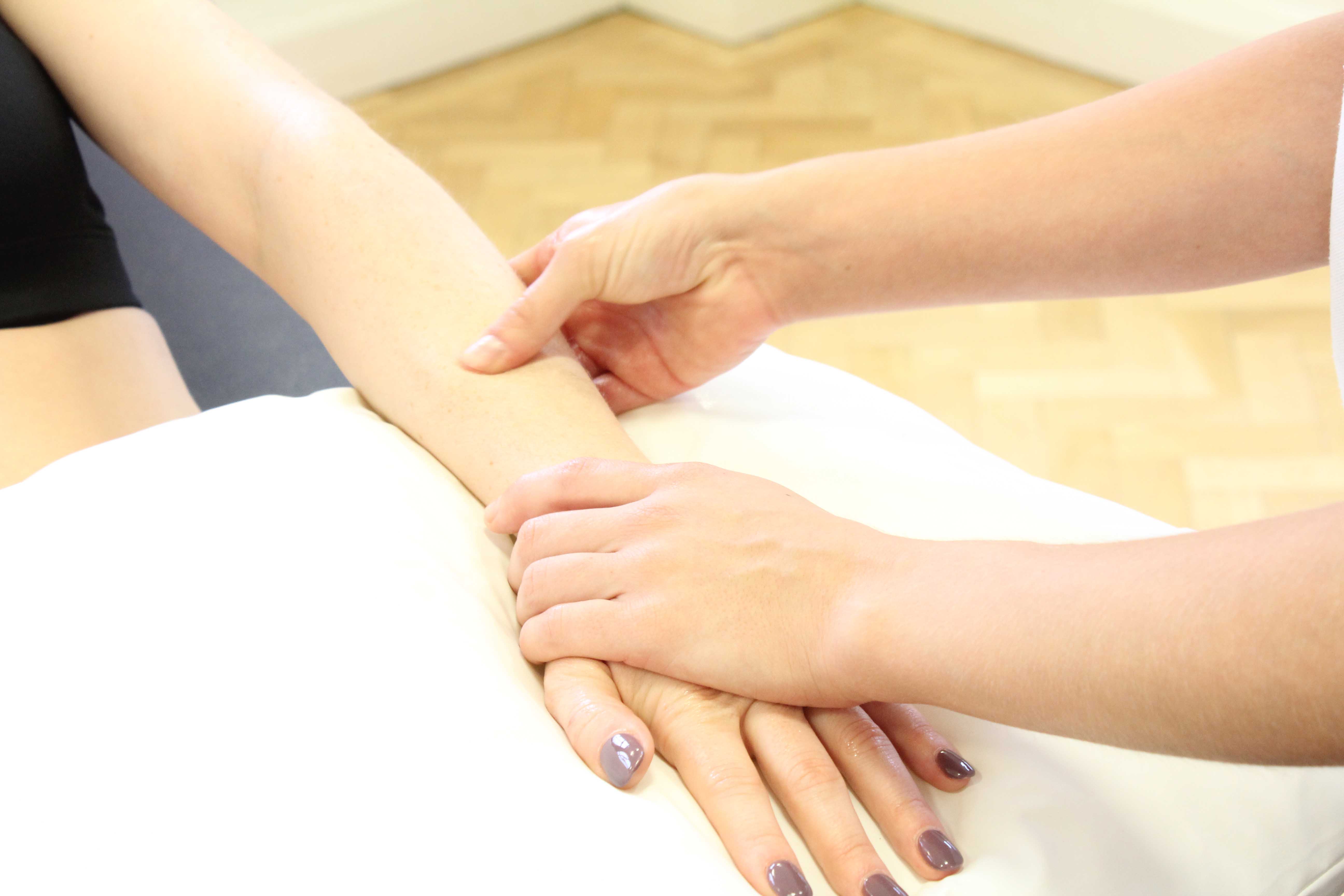What is entrapment of the posterior interosseous nerve?
Entrapment of the posterior interosseous nerve is when the nerve becomes caught as it travels through musculature on the outside of the elbow and forearm. Physiotherapy is an important part of the treatment for entrapment of the posterior interosseous nerve.
 Above: Therapist massage of the nerves and connective tissues in the posterior aspect of the forearm
Above: Therapist massage of the nerves and connective tissues in the posterior aspect of the forearmHow does posterior interosseous nerve entrapment happen?
Entrapment of the posterior interosseous nerve can be caused by stretching or compression as it slides by the supinator muscle in the forearm. This can be caused by either adhesions between the nerve and the muscle or entrapment if the muscle is excessively large or tight.
What are the symptoms of posterior interosseous nerve entrapment?
The most common sensation felt is pain on the outside of the forearm about four finger breadths down from the elbow joint. It is sometimes made worse by turning the forearm so that the palm of the hand faces upwards. Other symptoms include:
- reduced range of movement
- swelling/inflammation
- stiffness
- weakness
- numbness
- spasm
- tingling / pins and needles
What should I do if I have posterior interosseous nerve entrapment?
Entrapment of the posterior interosseous nerve generally does not get better unless the cause of the entrapment is treated. If you suspect that you have posterior interosseous nerve entrapment, you should arrange an appointment with Physio.co.uk. In the meantime, you should avoid activities which aggravate your pain as these may lead to the further entrapment and more pain.
 Above: Soft tissue massage of the muscle and tendons in the forearm
Above: Soft tissue massage of the muscle and tendons in the forearmPhysiotherapy treatment for posterior interosseous nerve entrapment.
Physiotherapy is very important in the treatment of an entrapped posterior interosseous nerve. Initially, your physiotherapist can diagnose the problem and establish its severity. This can sometimes require the referral for special nerve conduction tests which assess the transmission of signals along the nerve.
Following the assessment, your physiotherapist will be able to determine a treatment plan. This may involve activity modification and soft tissue treatment such as electrotherapy, massage and stretching. Your physiotherapist will also be able to assess and determine why you developed entrapment of the posterior interosseous nerve and address this during your recovery to prevent a re-occurrence when you return to exercise and sport. Other treatment includes:
What shouldn’t I do if I have posterior interosseous nerve entrapment?
If you suspect that you have entrapment of the posterior interosseous nerve, you should not ignore the problem. This can lead to your injury getting worse and may prolong your recovery.
Could there be any long-term effects from posterior interosseous nerve entrapment?
Entrapment of the posterior interosseous nerve does not usually have any long-term effects, if it is properly diagnosed and appropriately treated. If left untreated, it can lead to ongoing pain in the elbow and a prolonged lay-off from exercise and sport. In some situations, this may occur despite appropriate treatment. In these cases surgery may be required to remove the structures which have entrapped the nerve, and alleviate your pain.
To arrange a physiotherapy assessment call Physio.co.uk on 0330 088 7800 or book online today.

 0330 088 7800
0330 088 7800


































